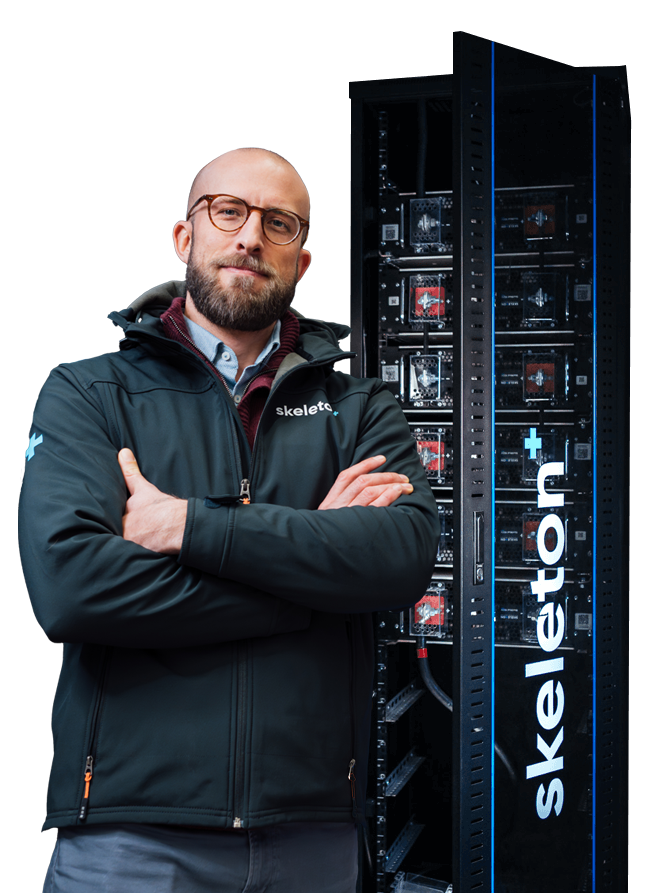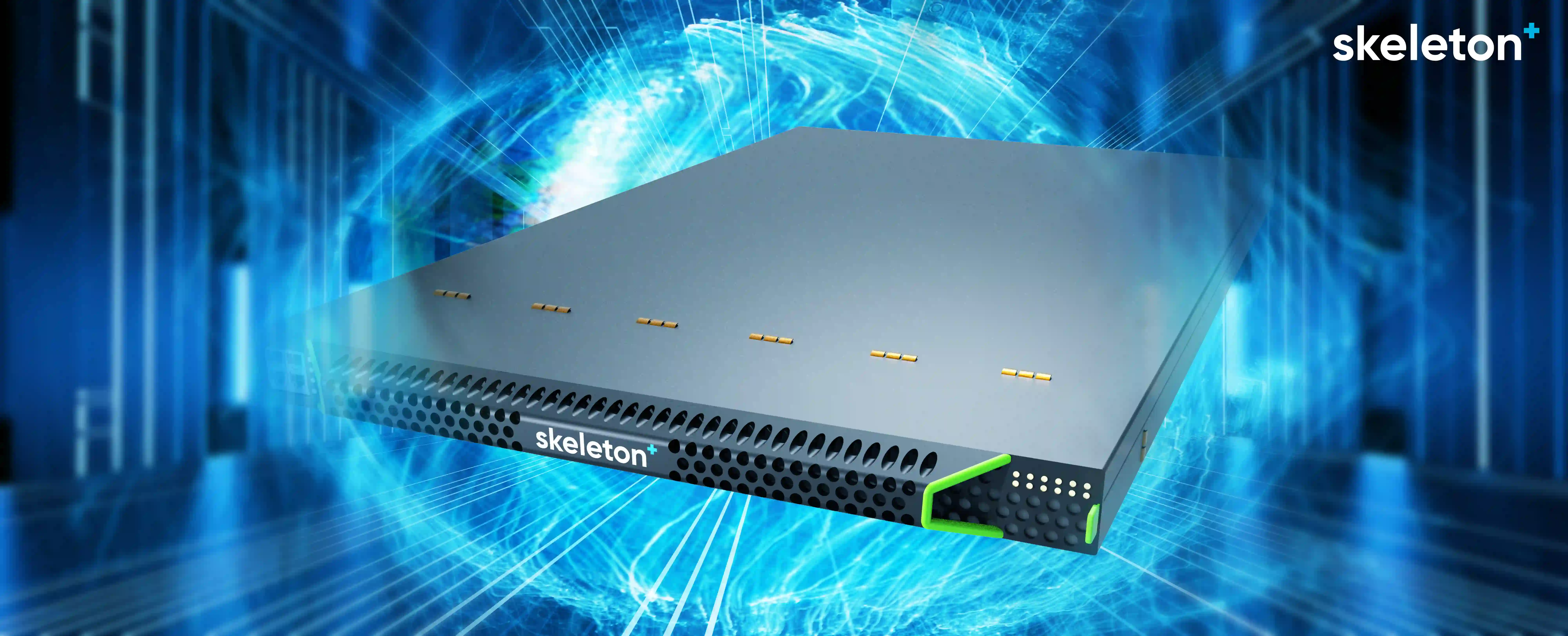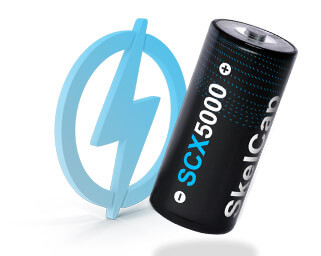Battery power has been a staple in the market for years, yet the risks associated with their manufacture, storage, use, and disposal remain a critical issue. The increased prevalence of data center fires, especially with the rise of AI, highlights these safety risks. While such incidents are relatively rare, their potential for devastation is significant. As the adoption of lithium-ion batteries continues to grow, it is essential for companies to recognize and address these risks.
This article explores the compelling reasons and optimal scenarios for replacing lithium-ion batteries with supercapacitors, offering a safer and more reliable energy storage solution for industry.
Why supercapacitors are a much safer option for energy storage compared to Li-ion batteries? Here are 5 ways supercapacitors can prevent hazards and risks
Supercapacitors offer a significantly safer energy storage solution compared to traditional batteries, and here’s why this matters for your business:
1. Energy Storage via Physical Processes: Unlike batteries that store energy through chemical reactions, supercapacitors store it electrostatically, reducing the risk of leaks, explosions, and fires. The lower energy density and greater thermal stability of supercapacitors further enhance their inherent safety.
2. Wide Temperature Tolerance: Supercapacitors perform reliably across a broad temperature range without the risk of thermal runaway, which can be a concern with batteries in industrial settings. This means safer operation in diverse environments, from cold storage to high-heat manufacturing floors.
3. Durability and Longevity: With the ability to endure more than million of charge and discharge cycles, supercapacitors maintain performance without considerable degrading. This not only enhances safety but also reduces maintenance and replacement costs—critical for continuous industrial operations.
4. Real-World Applications: Industries like automotive and renewable energy already use supercapacitors for rapid energy discharge without the safety risks associated with batteries. For example, public transportation systems utilize them for braking energy recovery, emphasizing their reliability and safety.
5. Practical Benefits for Your Business: Implementing supercapacitors can minimize downtime and enhance safety protocols, protecting both equipment and personnel. This makes them ideal for applications demanding robust, high-power solutions, such as factory machinery, grid stabilization, and emergency power supplies.
Switching to supercapacitors not only addresses safety concerns but also positions your company at the forefront of innovative and reliable energy storage solutions.
Top 6 reasons why your company should switch Li-ion batteries to supercapacitors, and when it makes the most sense to do it
Replacing a lithium-ion battery with a supercapacitor can be highly beneficial under specific circumstances, particularly when safety, durability, and fast energy discharge are top priorities for your business. Here’s when and why you should consider making the switch:
1. High-Power and Rapid Discharge Needs: If your operations require quick bursts of energy or frequent charge and discharge cycles—such as in industrial machinery, automotive braking systems, or grid stabilization—supercapacitors are ideal. They deliver rapid energy without the risks associated with chemical processes.
2. Extreme Environmental Conditions: Supercapacitors are robust across a wide temperature range and can handle extreme conditions better than lithium-ion batteries, making them suitable for outdoor or high-heat industrial applications where battery performance might degrade.
3. Safety-Critical Applications: In scenarios where safety is paramount, such as in environments prone to shocks, vibrations, or potential thermal runaways, supercapacitors provide a reliable and stable alternative, reducing risks of fire or explosion.
4. Identifying and Minimizing Risks:Conduct a Thorough Needs Assessment.
Evaluate the specific power and energy requirements of your operations. Look at the load profiles and determine if frequent cycling or rapid power delivery is needed.
5. Analyze Environmental Factors: Assess the environmental conditions your energy storage systems will face, such as temperature extremes or exposure to harsh conditions, which could impact battery performance and safety.
6. Engage in Risk Mitigation Planning: Develop a risk management strategy that includes regular monitoring, predictive maintenance, and fail-safes. Transitioning to supercapacitors can be part of this strategy by reducing inherent safety risks.
By choosing supercapacitors, companies not only enhance operational safety but also gain efficiency and reliability in their energy systems. For a detailed analysis of how supercapacitors can specifically benefit your business, reach out to Skeleton Technologies for a consultation.
Thermal runaway is a dangerous chain reaction that can occur in Li-ion batteries. Is there a similar risk associated with supercapacitors?
Thermal runaway is a significant safety concern with lithium-ion batteries, characterized by a dangerous chain reaction that can lead to overheating, fires, or explosions. Fortunately, supercapacitors do not face the same risk. Supercapacitors store energy electrostatically rather than through chemical reactions. This fundamental difference means that they are inherently immune to thermal runaway.
Here’s why:
1. Electrostatic Energy Storage: Unlike lithium-ion batteries, which rely on chemical reactions to store and release energy, supercapacitors use electrostatic fields. This eliminates the risk of reactions that can lead to overheating and thermal runaway.
2. Wide Temperature Tolerance: Supercapacitors are designed to operate safely across a broad temperature range. They do not suffer from the same thermal stability issues as lithium-ion batteries, reducing the risk of overheating in extreme conditions.
3. Robust Design: Supercapacitors are built to handle high charge and discharge rates without degrading their safety profile. They can endure more cycles and higher power demands without the risks associated with chemical instability.
In summary, supercapacitors offer a safer alternative to lithium-ion batteries by eliminating the risk of thermal runaway. Their stable performance across various conditions makes them a reliable choice for applications where safety is a top priority. For more information on how supercapacitors can enhance your energy storage solutions while mitigating safety risks, contact us.







